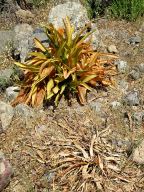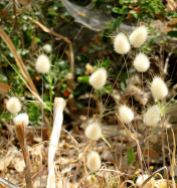As intended, after my earlier-than-planned visit to Symi I returned home to resume sorting out my vegetable and fruit garden ready to leave for the summer, a task helped by four days of unusually warm and sunny weather. Having planted cabbages and sprouts, sown parsnips, pruned apple trees (an autumn task), tied in raspberry canes (another autumn task), and countless other garden-based activities, I headed back to Greece, glad to escape the return to the all-pervading grey and wet which had descended on the UK again.
I arrived on the volcano island that is Nisyros for late spring.
In the distant past it was one of the most fertile and productive agricultural centres in the Mediterranean/Aegean, with massive harvests of grain grown on highly fertile volcanic soil. Narrow terraced fields climbing up steep mountainsides didn’t lend themselves to industrial scale farming. Coupled with reduced rainfall consequent on climate change the population moved out leaving much of the land to become feral.
Early spring and fields are blazing white and yellow with crown daisies but now they are golden brown. Eye-catching crimson of poppies have mostly finished flowering. Purple spathes of Dragon Arum are now confined to a few tiny specimens behind shady walls
By contrast late spring is characterised by a canvas of ripe wild-cereals, golden coloured and sweet smelling of hay, dotted with a huge variety of colours of smaller flowering plants.
Starting to make an appearance are the many thistles, the last of the plants to flower.
Soon all will be withered and dried up. But at the moment it’s eye-catching.
x



























Lovely – I really enjoy your posts about Nisyros!
lovely to see the flowers. Sandra and Karen X
Hello Barry
Just wanted to thank you for your entertaining writing and for your PDF guides to walking on Nisyros. By the use of them and a map I downloaded, I was able to cover the walk up to Emborio & back (I missed the bus up) and to walk from Nikia via Nyfios (an eerie place indeed) to the top of the mountain and back to Mandraki on two consecutive days. The bus–really a minibus–is still free.
There is a real web of paths just above Mandraki which I also, at first involuntarily, got a pretty good look at. I’d caution the time-poor to avoid the ‘alternative’ route from just below Evangelistria to Mandraki via Armos. I took this path (or rather series of ill-marked paths), and, although I ran across some very interesting landscapes and ruins, it took quite a while and a number of wrong turns to navigate.
For the walker, I think Nisyros is among the best islands in Greece, with among the widest varieties of fauna. Over three days there I saw wild pigs, owls, sheep, goats & cattle and huge billy goats the size of small cattle. The Paleokastro is really something to see.
Thanks again.